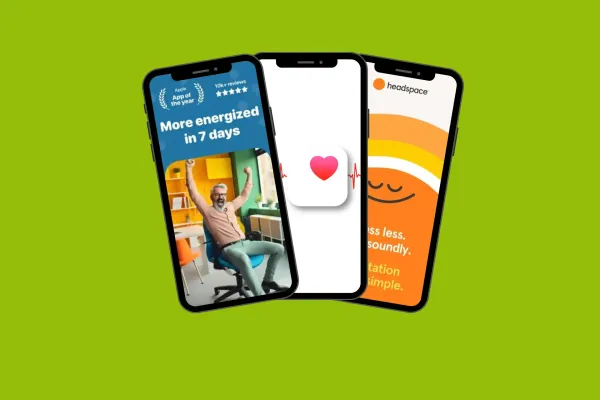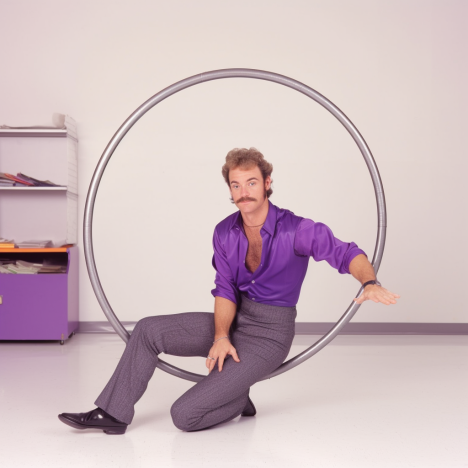Employees' health has a direct impact on the company's bottom line. When cared for, the vigor-infectious workforce takes less time off and works more efficiently, pardon - gladly.
Never mind the impression, we're not asserting the fact straight off the bat because that should be the number 1 motivator in taking care of your collective force. More humane reasons should shoulder themselves to the top of the jot-down of reasons.
We're airing this viewpoint because it helps to break through a dangerous paradigm. That's the one that stands as an impediment to preventing the workplace injuries and eliminating safety hazards. You already know that the aspects of employee safety, health, injury, and illness prevention are costly business. The baseless notion of cost containment in some areas holds no economic, not to mention any moral ground, whatsoever. It's also as stubbornly silly as it is disgraceful. The truth is...
Healthy employees cost you less.

The scale of the financial impact
First, ignorance about healthy life choices takes form in poor diet, addictive habits, and inadequate sleep, all leading to far more serious issues. These are problems that more often than not need medical attention. And medical care, as you know, is a reactive measure and reaction costs a lot more than prevention. For starters, days missed at work cost US employers a total of $36.4 billion a year. That's a yearly salary of $50K for more than 720,000 employees. Or, how about a university fund for 1.2 million students? Yup, a lot – a whole lot.
According to the Journal of Occupational and Environmental Medicine, the monetary value of presenteeism at work is six times higher ($3055 per person) than absenteeism ($520). Yes, present and engaged employees bring home the bacon. They also make a stellar staff, create better outputs, and are a heck of an awesome group of people to be around.
Finally – and the most vital point – the odds are your company is already dealing with safety hazards, occupation-related or chronic sedentary diseases. It's already altering your company's finances and you should be looking for a more steady course towards a sustainable and prosperous future. Chances are that trying another path – the quick-wins one – may cost you many cumbersome expenses that align with your steep learning curve.
Table of Contents
- Scale of Financial Impact
- Workplace Injury Statistics
- #1 Occupational risk assessment
- #2 Create a safe work environment
- #3 Understand your employees
- #4 Prevent burnout and overexertion
- #5 Don't succumb to forecast pressures
- #6 Support parents
- #7 Ameliorate workplace ergonomics
- #8 Do physical activity breaks
- #9 Chronic kidney disease
Workplace Injury and Chronic Illness Statistics to Know in 2023
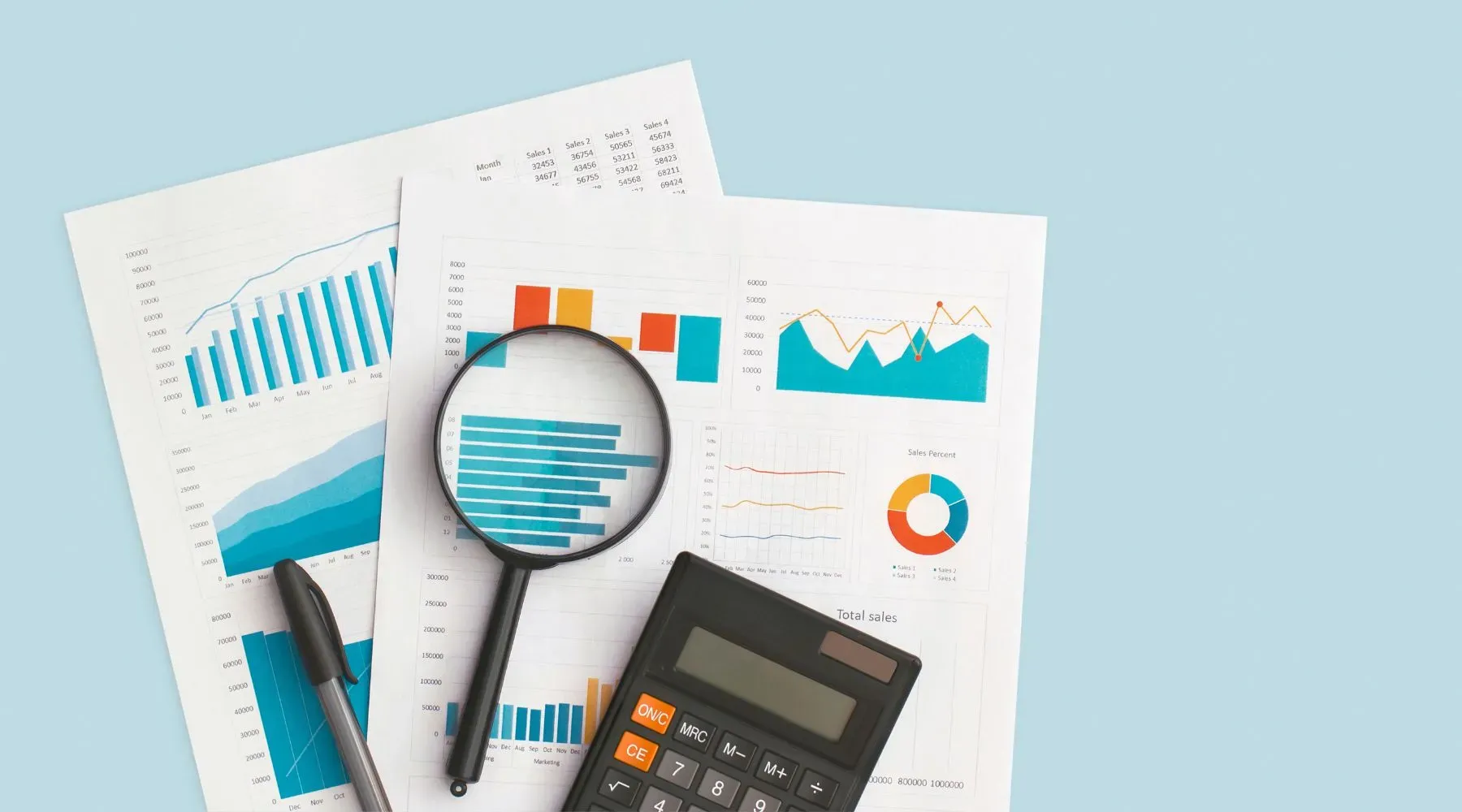
While we may have Artificial General Intelligence and Mars colonization somewhere on the horizon, we still haven't figured out a way to keep our employees away from workplace injury, health, and safety hazards at work. Workplace safety concerns may seem like a drag and not the most uplifting colloquy, but they're a serious matter. And, those of us in business are sort of slacking behind.
From Sedentary Death Syndrome to workplace injuries, nothing good ever comes from neglecting our personal and collective safety and health. If you're still not convinced, just consider the impact work-related injuries and illness can have on employee morale. For lack of a better way to phrase this, no one wants to work for a company that puts their health at risk for long stretches. So, to help you make 2023 a startup year for physical prosperity, we'll first present you with recent data to help paint a better picture of where we're at in therms of keeping our employees safe and vigorous.
- Based on Work Injury Source, both fatal and non-fatal workplace injuries are on the rise and result in more time absent from work.
- According to the National Center for Chronic Disease Prevention and Health Promotion, 6 in 10 adults have a chronic disease. As many as 4 in 10 have two or more chronic illnesses.
- Per the same source, NCCDPHP, chronic diseases are the leading drivers of the nation's $4.1 trillion annual healthcare cost.
- According to the Bureau of Labor Statistics, there were 2,607,900 total recordable cases of nonfatal workplace injuries in 2021 (latest data) and 5,190 fatal workplace injuries.
- The U.S. Bureau of Labor Statistics notes that 888,220 workplace injuries recorded in 2019 resulted in time away from work.
- Multiple reports relate that the industries with the highest number of non-fatal workplace injuries are healthcare, retail trade, manufacturing, transportation and warehousing, accommodation and food, and construction.
- A new study reported by WasteAdvantageMagazine, the most dangerous states based on the frequency of workplace injuries are: Maine (at a rate of 4.7), Oregon (3.8), Vermont (3.8), Washington (3.5), Montana (3.4)
Head back to the Table of Contents ⬆️
#1 Assess how your line of work affects employees' health and safety

Various professions entail different hardships - and different occupational safety concerns. The likelihood of facing motor vehicle accidents is higher in the transportation industry, whereas construction workers are more prone to burns and fall. Hence safety shoes and hard hats. On the other hand, sedentary occupations report a wider array of chronic diseases, obesity, depression, and musculoskeletal disorders. Carpal tunnel syndrome or chronic back pain to name a couple.
Hazardous practices in all of their unending diversity are no joke! And sadly, we're not talking about the kind that can easily be avoided by wearing a hard hat, safety shoes, or just sitting in an ergonomic seat. Identifying potential hazards may seem like a daunting task. Yet, answering simple questions may put you on track to ultimately solve the puzzle that is workplace safety.
The following questions can help you see patterns that may have been foggy prior to quizzing yourself.
So, to scrutinize, bring attention to the following issues:
- Do I, personally, experience chronic aches, and how frequently do I experience a work-related injury?
- Do our employees often complain about certain health issues? What are the 3-5 most common occupational safety concerns?
- Do we encourage employees to discuss their health and safety concerns or potential hazards?
- Are these health and hazard concerns prevalent within our specific industry? If not, what safety and health hazards are specific to our company?
- Do any of these concerns include any repeating pain or condition that worsens at work or from a repetitive movement?
- Have I done any research to learn about the long-term effects of any of these potential work-related health threats?
If answering without guidance feels like a path-already-walked, the Job Hazard Analysis tool by Environmental Health and Safety should serve you well to identify potential risks of your line of work.
Head back to the Table of Contents ⬆️
#2 Create a safe work environment
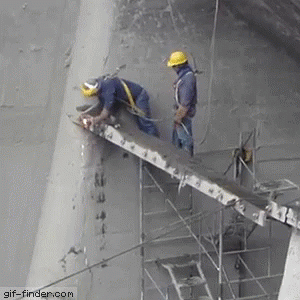
In recent years, companies are pushing the pace to collect compliance badges. Let's just call it a praiseworthy trend, OK? Appealing to environmental regulations is one way in which companies are earning these tokens. However, in doing so, people's health – and paradoxically so – may again be sidelined. Green buildings, sustainability, and energy efficiency may not always harmonize well with dealing with workplace injuries and safety concerns.
In fact, a blinker-focus on sustainability is often hurting workplace wellness.
According to John Macomber, an HBS lecturer, and building expert, it turns out that green buildings aren’t necessarily healthy buildings.
"There’s so much emphasis on saving energy, which means we’re not doing as much in the way of ventilation and filtration, and using other means to evaluate the air," says John and continues to argue that it's just a tip of the iceberg.
Truth be told, taking safety measures goes miles beyond just filtering air and airing out spaces. In terms of employee safety in general, there are steps companies can take to ensure fewer employees end up wishing their health was more sustainable.
- Clean and sanitize. Institute a regular, thorough housekeeping schedule to avoid serious health and safety hazards. Assure that cleaners are getting rid of high and low dust or debris, making sure they minimize exposure to most common allergens, along with cleaning and disinfecting door handles.
- Maintain equipment. Inspect all risk-bearing equipment after use and perform regular maintenance. This includes inspecting heavy machinery, engineering equipment, or the company's vehicle fleet to avoid fatal and nonfatal workplace injuries.
- Minimize known hazards. Keep your workplace free of known biological, physical, ergonomic, chemical, and workload hazards.
- Stay up-to-date with safety standards. Keep informed of Workplace Safety and Health standards and abide by the most recent regulations.
- Provide safety equipment. Whatever protection the job demands, protective and health-supporting equipment should be close within reach – no matter if it's helmets or ergonomic equipment. For high-risk jobs, non-compliance with use on the worksite should be fined or penalized.
Head back to the Table of Contents ⬆️
#3 Stay open to understanding your employees

If there's one cultural shift we grew to appreciate post-pandemic it's the normalization of turkey-talking about issues. Voicing our thoughts on illnesses has sort of become expected, or should we say nearly welcome in our work environments.
Overnight, taboo morphed into me too. And why not? Chances are your colleague and the one sitting right next to her both suffer from a chronic illness. In fact, 6 in 10 Americans are more likely to wake up to pain instead of a peanut butter treat. And so many of us loooove peanut butter treats in the morning!
Now, to dissolve a positive with a whack fact - a study of over a thousand employees in 2019 revealed that 60% believed their leaders could not support people suffering from chronic medical conditions. Just shortly after the survey, a former-normal pandemic went on to show that the majority was right. The leaders indeed were not able to grapple with all sorts of challenges and that includes the mental hurdles. The evidence that speaks to this truth was stamped with force in the form of The Great Resignation.

In our effort to build a bridge in understanding, stressing the importance of a good-old walk-in-someone-else's-shoes is incumbent. Doing so on several levels – emotional, physiological, psychological – is meritorious and exemplary. Plus, it may just help you keep a good portion of your workforce happy.
In order to understand this workplace phenomenon, it's best to ask people with chronic illnesses or stubborn workplace injuries. How they're adapting to a painful new normal? What mental states is their reality triggering? How has their sense of self changed ever since they developed a chronic condition? How are their careers, pleasures, and aspirations shifting because of their health changes?
One such question gave birth to a Spoon Theory – a metaphor that has helped countless people understand what it's like to live with chronic issues. It's an explanation that may bridge the gap of understanding.
In this context, spoons are all about daily energy – specifically, how much of it someone has to tackle the daily routines that most of us take for granted. For those living with chronic illnesses, well... a fair amount of spoons is spent by default.
Think about it – timing your meals so you can take your medicine, carrying around medical tools, or planning your day around treatments...all of that takes a lot of spoons (energy). And while it might seem like something people easily get used to, just understand that there'll always be less energy left to meet high expectations at work or in life.
Head back to the Table of Contents ⬆️
#4 Create Effective Illness Prevention Program

Good intentions are praiseworthy. But, as long as companies avoid serious, ink-on-paper responsibility for maintaining a safe and healthy workplace, we'll be deprived of seeing better health statistics.
If your company is registered in the US, you're probably acquainted with Occupational Safety and Health Act. It's a legal guide designed to impel companies to adopt an illness prevention program. Now, a symptomatic behavior adjacent to this act is that it's taken lightly. Companies comply with the standards to keep regulators off their backs instead of doing it for more practical, worthwhile motives.
To really adopt an effective illness prevention program, you should decide exactly what you want to accomplish and how you're planning to get there. In addition, OSHA suggests that any effective illness-prevention program should include:
- Clearly assigned responsibilities. Decide who within the organization will bear the responsibility to manage the illness prevention program. Make it clear to other employees as well who this person is in case they want to file their complaints.
- Safety and health survey. A survey should help you map out current work practices, physical hazards, employee work habits, equipment, and chemical dangers.
- Assessment of the workplace. Evaluate your existing illness prevention program and examine the following data: accident, injury, or illness data, injury compensation costs, employee turnover or absenteeism, program procedures, and documentation.
- Employee access to the illness prevention program. Every employee should have a right to ask and suggest tweaks to illness prevention program. They should have unobstructed access to an IIP in written form and should be able to review, print and email the doc.
#5 Stay wary of burnout and workday fatigue
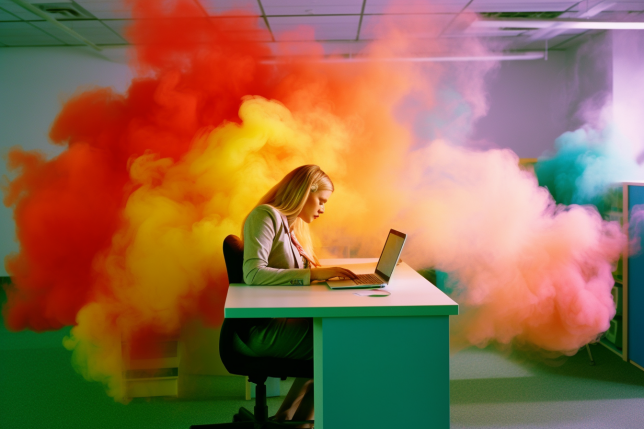
You know that feeling of utter drainage after a lengthy work week; the kind where even the act of getting dressed seems like an insurmountable undertaking. What happens when that phenomenon becomes chronic? When your job drains you of energy, leaving you deprived of happy hormones on a daily basis?
Indeed, we're talking about a job burnout – a career slayer and a spirit butcher that can leave people feeling like a shell of their former selves. It's no wonder that at this point in time, the World Health Organization officially labeled burnout as a syndrome or an occupational phenomenon.
Burnout signs are clear and companies need to take them seriously.
With symptoms including mental distance from your job, cynicism, radiating negativity, and reduced professional efficacy, burnout is one of the underlying reasons for increasing rates of absenteeism and resignations. In order for companies to better handle the growing fumes, the following may be a fitting place to start:
- How people experience the workload is far more impactful than the workload itself. Therefore make sure your employees immerse themselves in meaningful and joyful work. Companies that tend to cherish employee strengths instead of illuminating their shortcomings can stride forward with fewer burnout cases.
- Burnt-out middle management (46% according to a recent Slack study) can't deal with their people's mental health if they're under the biggest fire. Helping management, well... manage their mental health is likely to spill over the effects out to the rest of the staff.
- Recovering from stress is far easier than rising from the ashes of burnout. And burnout is nothing more than cumulative, untreated stress. Therefore, it's better to manage stress, rather than deal with burnout.
- Vacations, work breaks, physical activity, stress management – this is not the list for wishful thinking.
- Building a strong support system that separates the work expectations from the god-honest conversation about mental health is a worthy, commendable aspiration.
- Weed out the abusive managers as they tend to hold down the rest of your workforce, especially those close to them. If you think this is not the most prevalent issue around your company, just bear in mind that narcissists tend to flourish in most work environments.
Head back to the Table of Contents ⬆️
#6 Don't succumb to forecast pressures
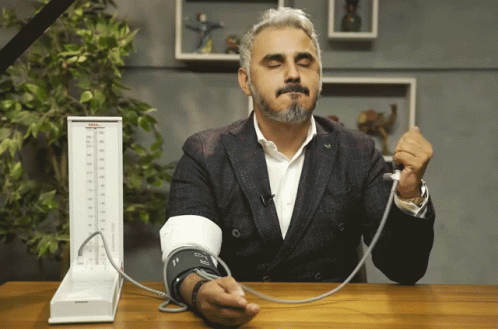
Would you assume that a looming shadow of meeting forecasts severely impacts workplace safety? Well, researchers did. Moreover, they decided the thing was worth the rigorous analysis. In 2017 in a study of 868 firms published by the Journal of Accounting and Economics, was conducted to observe how the boiling pressure of meeting the elusive, eel-like-slippery benchmarks affected workplace safety.
Apparently, it does in at least two ways: (1) added workload and (2) cuts to safety-related expenses. Managers, in desperate attempts to meet goals, may push employees to work faster and harder, risking their sense of well-being. And let's be honest, we've all been guilty of taking shortcuts or overexerting ourselves when deadlines loom. But cutting safety budgets? Well, unfortunately, it is an established protocol...
In their explicatory piece on HBR, researchers elucidate that there is a 5% – 15% increase in injury or illness rates during periods when a company meets or slightly exceeds analyst forecasts. While pushing hard to meet quarterly or annual targets may help companies in the short term, it raises the question of whether this is simply another incline lap on the treadmill to poor physical health. It seems likely that such overexertion will eventually take its toll, impacting the company's performance in the long run.
Head back to the Table of Contents ⬆️
#7 Give love to the loving parents
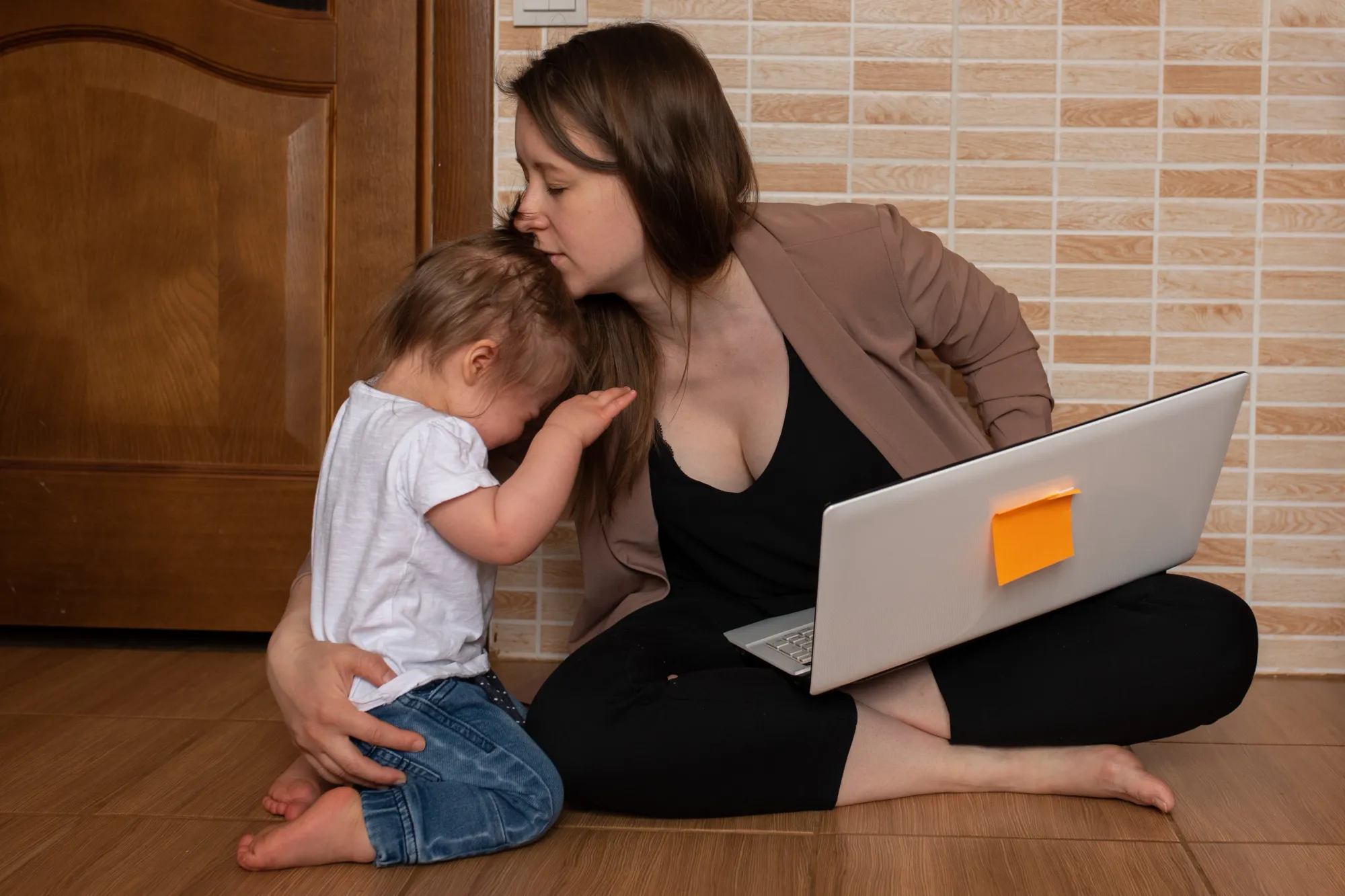
Didn't see this one coming? Well, the data you're about to see will probably make you pay attention.
Parents make up a large portion of the US labor force. In fact, two in five employees – which makes up 40% of the total workforce – are parents with a child under age 18. Every ninth is happy to be raising a child below 5 years of age. For starters, let's just say that's one whoppingly large group of people that has a lot in common – similar needs, shared concerns, and a heck of a good foundation for understanding work/life challenges.
In fact, we'll even argue this large demographic group deals with the widest range of life challenges. Single parenthood, making ends meet, child upbringing, reliable and affordable childcare, high work performance pressures (ironically), a child with mental health challenges (every 1 in 5 kids!), and I-QUIT scarcity because they've got mouths to feed... well, that's just a few of the countless worries...
Parental circumstances make way to the biggest work/life challenges. The bigger the challenges the bigger the work/life support should be.
To create a work environment where they don't have to seek solace in sick leaves – and to make them resolutely engaged in work – most parents will voice their needs in three areas: flexibility, time off, and childcare support. When companies appeal to these needs, the benefits they subscribe to are immense: diversified management styles, increased productivity, higher retention, and lower stress rates. So, what initiatives can organizations implement to help working moms and dads?
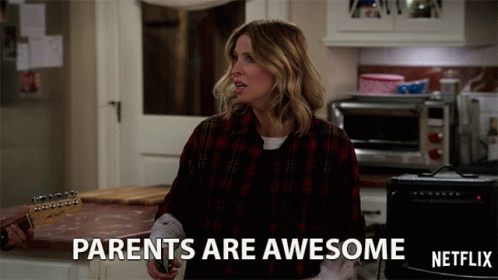
- Write policies. If you really want to aid your employees you need to make it official. Especially, if you want to spare your employees from frustration and false promises. Be specific, put it in writing, and let it be clear to everyone how they may subscribe to the support lever whether it's a flexible work schedule or childcare voucher.
- Amplify leaders' voices. Writing is obviously not enough. In a culture prone to peer pressure there are gaps your stout frontrunners need to fill with encouraging messages. If it's an employee's right to claim parental support, tell them. Also, let your managers know they should be the first ones to use the benefits, and then tell others about the benefits they're reaping.
- Technology makes it possible. Technology has made it easier for companies to offer flexible work arrangements and other support options. However, it's important to pay attention to the details that make it possible. For instance, if you're trying out a new approach or support system, it can backfire if you don't effectively coordinate with the right tool and clear policies and procedures.
- Result, not time oriented. When transitioning to a new approach, it's easy to fall into the trap of judging employee performance based on the amount of time they spend working. However, it's important to let go of traditional assessment methods and focus instead on measuring output and involvement in important tasks.
Head back to the Table of Contents ⬆️
#8 Ameliorate workplace ergonomics

Taking care of your fellow employees is crucial to cultivating a successful and thriving workplace culture. So far we all got that. One great (and proven) way to pump up health stamina and avoid workplace injuries is paying attention to the ergonomic design of your office. To point up why doubling down on body-friendly toolkits is a sound decision, we gathered some far-from-murky data.
Musculoskeletal disorders (MSD) – a range of ailments that affect the muscles, bones, or joints - are the leading cause of years lived with disabilities for 30+ years. According to the Health Metrics and Evaluation IHME (2019), the average burdening cost of these workplace injuries falls somewhere around $8,300 per MSD claim. Further, according to the WHO, 60-70% of adults are affected by lower back pain in industrialized countries. It all adds up to opening the door to the last piece of evidence – poor ergo work environments account, on average, for a 3% reduction in productivity.
Consistent and compelling data emphasizes the importance of workplace ergonomics – a topic worthy of your attention. To deliver on your promise to keep everyone safe, bouncy, and spry, it's worth making sure that the right details are well taken care of.
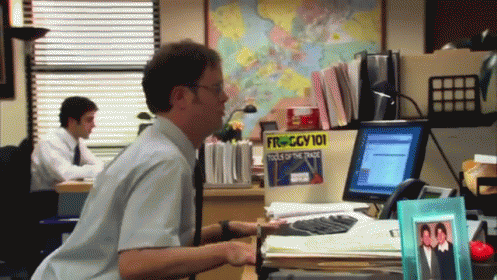
- It's important that employees have space to move around, reach their toes with their fingertips, spread their limbs, and spurt in short physical activity breaks.
- Encourage posture checks: Educate your employees on the perfect sitting posture and make sure they're constantly encouraged to straighten up.
- Exercise balls, standing desks, adjustable computer monitor, ergonomic chairs, and some more should comprise your company's ergonomic tool stack.
- Ensure your employees – if the nature of the job allows it – to sit as close to natural light as much as possible.
- Plants, air-humidifiers, and windows: These all conspire to fill up space with happy and more breathable ions.
Head back to the Table of Contents ⬆️
#9 Physical activity breaks

According to Mayo Clinic, prolonged sitting is associated with various health issues, so much so that it poses the same risk of early death as smoking. If you're getting the impression we're dipping our health in muddy waters, you're probably right. We're amidst the SeDS epidemic that puts 60% of Americans at risk for all sorts of chronic aches, workplace injuries, and pains. But, disregard the hunch for a moment because – good news – we're not completely doomed.
On a positive note, studies show that short bursts of physical activity can have significant benefits. They can reduce stress, anxiety, and depression levels among sedentarians, for the lack of a fitting label. More importantly, updated evidence goes to show that sedentary hazards can be crushed into non-existence with just 60 to 75 minutes of physical activity daily. The reason for just 60 minutes is that the bar can be reached pretty darn easily.
A breather from work could be an exercise break for your employees and the meeting can be a standing assembly. Your collective encouragement, on a company level, could turn the adverse effects of a sedentary lifestyle into a jubilant and creative workforce. In fact, here are some perks the proper move-groove enforcement could set you up for:
- Workplace wellness that supports and sparks a chain of healthy behavior among employees. This viral, cultural gleam, in turn, improves collective health outcomes.
- Lower obesity and other sedentary-related disease rates. Plus, healthier and more activity-conscious families that ask for less sudden attention from employees.
- Less back pain. Most back pain, especially the one at the outset, can be alleviated with back activation exercises and regular stretching practice.
- Higher productivity and work satisfaction. Work breaks, especially physically active ones, are proven to boost performance at work.
- Superior creativity. Unusual activities, on top of happy-hormone-inducing exercises, are argued to aid in shaping a creativity-rich work environment.
- Bolstered mental and emotional well-being. To keep the wits sharp and nourished, means to keep on moving. Studies thud down the stamp on that statement.
To keep common movement depletion at bay, you could escalate a simple tip list all the way to your last employee. Of course, with some auxiliary health education and facts that are sure to embolden elevated levels of physical activity. In case you wonder, the breaks are best served:
- At a minimum rate of 5 times a day
- When taken every 30 mins, ideally
- During a long seated period or repetitive body movement
- When inked into the habit during work-break transitions (standing up for a pause means a 2-minute stretching routine)
- When done with a Physical Pomodoro Timer
Head back to the Table of Contents ⬆️
#10 Being Genie in the Bottle is neither costly nor exhausting

We even dare to top it off... ready? Everyone's Alladin.
Yes, we sure feel Genie's pressure right now to deliver on the seemingly insurmountable promise. Still, without even a slight mumble of an uhh, here it goes.
It's not a secret that modern workplaces are in a constant state of evolution – ehm convolution, sorry. And, 2023 is stupefying companies with its own unique set of challenges. From navigating the onslaught of phenomena that have shaken up the professional landscape, like the pandemic-driven shift to remote work, to the rising burnout rates, absenteeism, and disengagement – companies are struggling to keep employees from mingling with headhunters. Mercenaries, who are ironically (and sadly) collecting talent for companies head-deep in the same type of people hurdles.
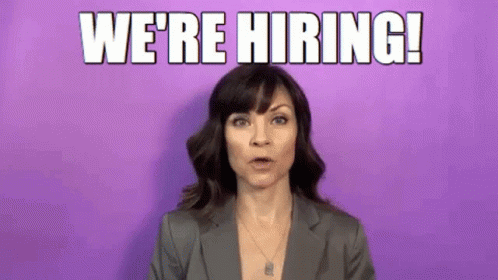
As if that weren't enough to contend with, emerging technologies, like AI and metaverses, are dominating the conversational space, leaving employees feeling left in the void. And, although a common phenomenon, it feels lonely there, in the void.
One way we recommend companies to fend off absenteeism and disengagement is with use of the Employee Favorite Things List. It's a simple, yet powerful solution that won't break the bank. By taking the time to get to know your employees on a personal level, you'll have the information you need to create personalized rewards that will make them feel valued and appreciated. The best part is, creating your own Favorite Things template is well... already taken care of and ready for download. Moreover, handing out the simple survey right after employee onboarding won't break the bank!



